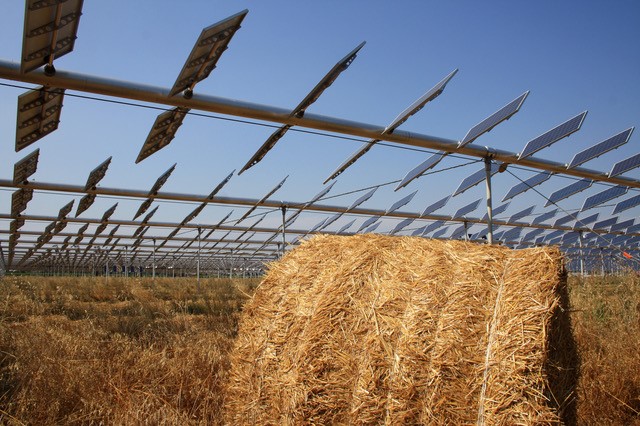New research from Italy shows lower wheat production under elevated agrivoltaic systems, but a simultaneous increase in nutritional value for livestock. pv magazine Italy spoke with the academics about their future research.

Researchers in Italy have conducted a series of experiments to assess the quality of wheat growing under elevated agrivoltaic systems. The have found that it has greater nutritional value for livestock.
The CNR Institute for Bioeconomy, the University of Florence, and Italian agrivoltaic specialist REM Tec srl conducted the study on 11.4 hectares of wheat in Borgo Virgilio, in the province of Mantua. The system featured 7,680 Bisol panels and 768 trackers at a height of 4.5 meters, for total PV coverage of 1.3 hectares.
The team used three sections of 12 meters x 12 meters with photovoltaic coverage with a ground coverage ratio (GCR) of 13% and three sections of 144 m2 with a GCR of 41%. They also used three as reference sections with similar characteristics, but without panels and shading structures.
“Two years of experiments have revealed that the reduction in wheat yield is limited in the phenological phase of waxy maturation in standard trackers (GCR = 13%); while the reduction was 29.6% in panels with increased shading (GCR = 41%),” Lucrezia Ghidesi, Business Developer at REM Tec srl, told pv magazine Italy. “The reduction in irradiation has substantially changed the length of wheat plants; this influenced the quality of the fodder biomass.”
The team considered parameters such as dry matter, ash, crude protein content, insoluble neutral detergent proteins, detergent proteins insoluble acids, soluble proteins, neutral detergent fiber, acid detergent fiber and acid detergent lignin.
The study suggests that shading influenced protein and fiber fractions in wheat biomass, while also affecting digestibility for ruminant feed.
“Digestible neutral detergent fiber assessed after 24 hours of in situ incubation in the rumen increased with shading,” the scientists explained. “The shaded plots also had higher crude and soluble protein, insoluble acid detergent protein, acid and neutral detergent fiber than the control plots. Biomass from shaded treatments had a better calcium-phosphorus ratio for ruminant feeding.”
The team conducted the experiments between 2022 and 2023. REM Tec told pv magazine Italy that the data will have to be further validated with experimentation in 2024. It said that production averages could change in the coming months.
“These results could be useful for improving biomass production and providing valuable information on durum wheat in the agrovoltaic system,” the academics concluded.
They presented their findings in “Determination of feed yield and quality parameters of whole crop durum wheat (Triticum durum Desf.) biomass under agrivoltaic system,” published in Agroforestry Systems.

